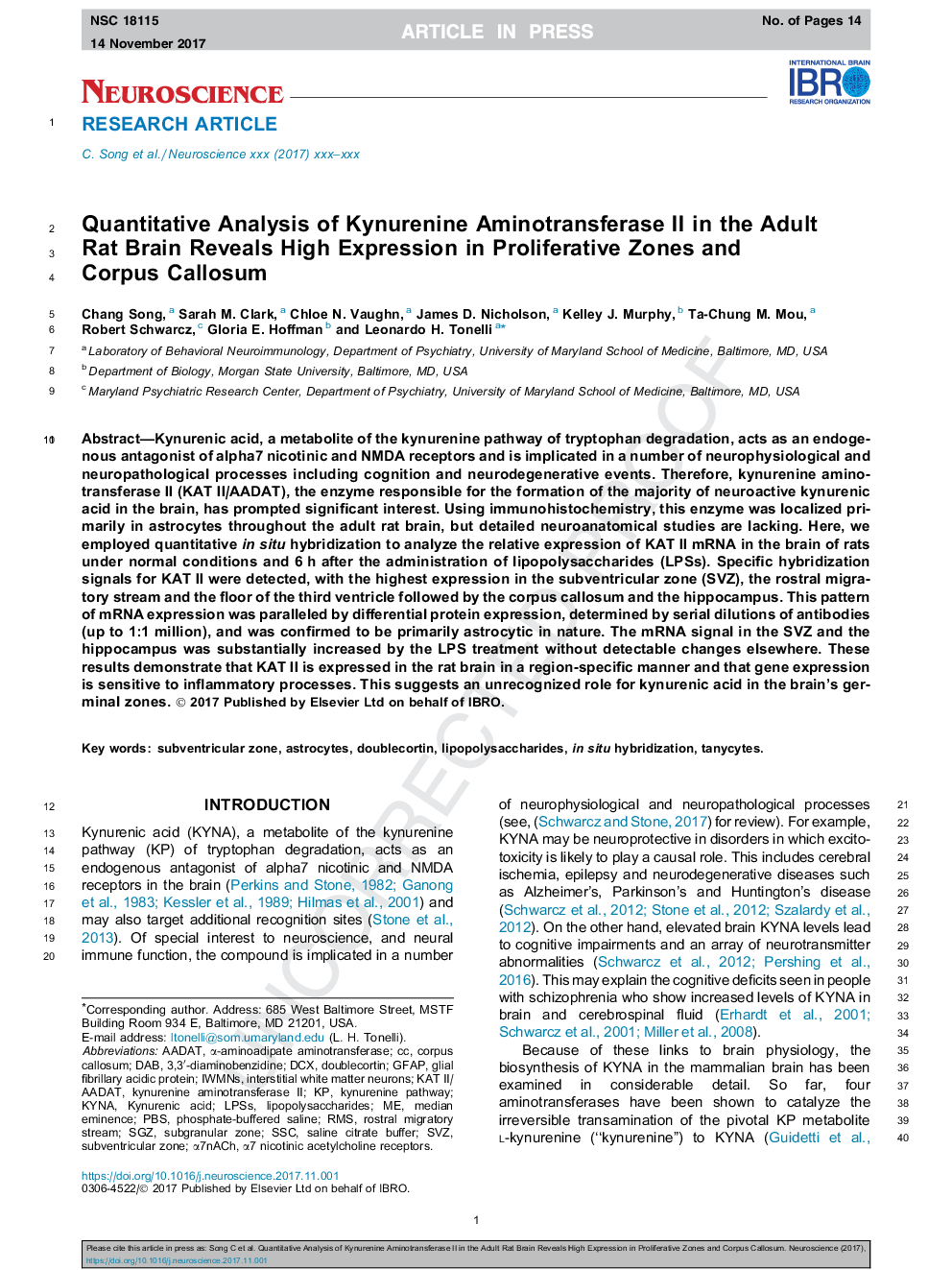| Article ID | Journal | Published Year | Pages | File Type |
|---|---|---|---|---|
| 8841158 | Neuroscience | 2018 | 14 Pages |
Abstract
Kynurenic acid, a metabolite of the kynurenine pathway of tryptophan degradation, acts as an endogenous antagonist of alpha7 nicotinic and NMDA receptors and is implicated in a number of neurophysiological and neuropathological processes including cognition and neurodegenerative events. Therefore, kynurenine aminotransferase II (KAT II/AADAT), the enzyme responsible for the formation of the majority of neuroactive kynurenic acid in the brain, has prompted significant interest. Using immunohistochemistry, this enzyme was localized primarily in astrocytes throughout the adult rat brain, but detailed neuroanatomical studies are lacking. Here, we employed quantitative in situ hybridization to analyze the relative expression of KAT II mRNA in the brain of rats under normal conditions and 6â¯h after the administration of lipopolysaccharides (LPSs). Specific hybridization signals for KAT II were detected, with the highest expression in the subventricular zone (SVZ), the rostral migratory stream and the floor of the third ventricle followed by the corpus callosum and the hippocampus. This pattern of mRNA expression was paralleled by differential protein expression, determined by serial dilutions of antibodies (up to 1:1 million), and was confirmed to be primarily astrocytic in nature. The mRNA signal in the SVZ and the hippocampus was substantially increased by the LPS treatment without detectable changes elsewhere. These results demonstrate that KAT II is expressed in the rat brain in a region-specific manner and that gene expression is sensitive to inflammatory processes. This suggests an unrecognized role for kynurenic acid in the brain's germinal zones.
Keywords
Related Topics
Life Sciences
Neuroscience
Neuroscience (General)
Authors
Chang Song, Sarah M. Clark, Chloe N. Vaughn, James D. Nicholson, Kelley J. Murphy, Ta-Chung M. Mou, Robert Schwarcz, Gloria E. Hoffman, Leonardo H. Tonelli,
